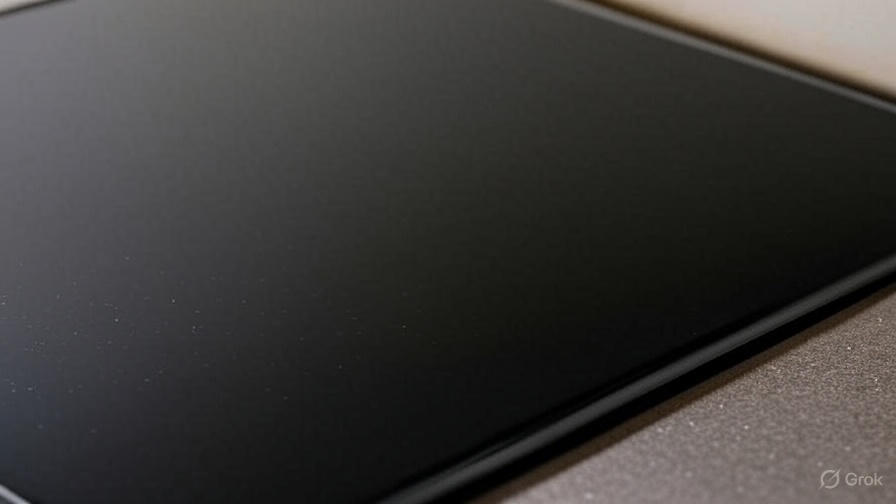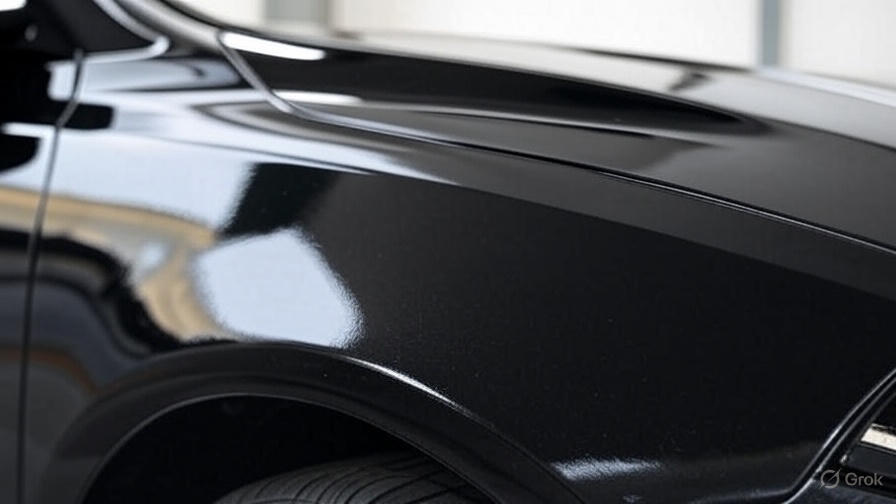SEM Ultra Black coating stands as one of the most popular automotive trim restoration solutions on the market today. This professional-grade acrylic coating delivers exceptional results when you know how to properly maintain and care for it. The key to achieving that factory-fresh appearance lies in proper treatment techniques and regular maintenance protocols.
Professional detailers and automotive enthusiasts rely on SEM Ultra Black coating for its superior durability and authentic OEM appearance. However, the longevity and visual appeal of this coating depend entirely on how well you treat and maintain it after application. This comprehensive guide walks you through every step of the process, from initial preparation to long-term care strategies.
Understanding SEM Ultra Black Coating Properties
SEM Ultra Black coating represents a breakthrough in automotive trim restoration technology. This acrylic-based formula bonds directly to various surfaces including plastic, aluminum, steel, and stainless steel without requiring primers or base coats. The coating creates a deep, rich black finish that matches modern automotive trim specifications perfectly.
The coating’s molecular structure allows it to flex with temperature changes while maintaining adhesion to the substrate. This flexibility prevents cracking and peeling that commonly occurs with inferior products. The jet-black pigmentation resists fading from UV exposure, making it ideal for exterior trim components that face constant sun exposure.
Professional applications benefit from the coating’s self-leveling properties. This characteristic eliminates brush marks and provides a smooth, even finish that rivals factory applications. The coating also demonstrates excellent chemical resistance, protecting against common automotive contaminants like road salt, cleaning chemicals, and petroleum products.
Essential Tools and Materials for Coating Treatment
Success with SEM Ultra Black coating treatment starts with having the right tools and materials on hand. Professional results require professional-grade equipment and supplies. Each component plays a crucial role in achieving optimal outcomes.
Surface preparation tools form the foundation of any successful coating treatment. You’ll need various grits of sandpaper, ranging from 400 to 800 grit for different preparation stages. Fine-grit sandpaper removes imperfections while creating the proper surface profile for adhesion. Steel wool or abrasive pads work well for textured surfaces that require gentler treatment.
Cleaning supplies must be automotive-grade to ensure proper decontamination. SEM Soap provides the initial cleaning power to remove surface dirt and grime. Grease and wax remover, such as SEM 38373, eliminates all traces of contaminants that could interfere with adhesion. Tack cloths remove final dust particles before coating application.
Application equipment directly impacts the final appearance quality. High-quality spray guns or aerosol cans ensure even coverage and proper atomization. Air compressors must provide clean, dry air to prevent contamination during application. Masking materials protect surrounding areas from overspray while maintaining sharp edges.
Safety equipment protects you during the treatment process. Respiratory protection prevents inhalation of coating particles and solvents. Eye protection guards against splashes and particles. Nitrile gloves provide chemical resistance while maintaining dexterity for precise work.
Pre-Treatment Surface Preparation Techniques
Proper surface preparation determines the success or failure of any SEM Ultra Black coating treatment. This critical phase removes contaminants, creates proper adhesion surfaces, and ensures optimal coating performance. Skipping or rushing preparation steps invariably leads to poor results and premature coating failure.
Begin the preparation process with thorough cleaning using SEM Soap and warm water. This initial wash removes surface dirt, road grime, and loose contaminants that could interfere with subsequent steps. Rinse thoroughly with clean water and allow the surface to dry completely before proceeding.
Decontamination follows the initial cleaning phase. Apply SEM grease and wax remover using clean cloths, working in small sections to ensure complete coverage. This step eliminates oils, waxes, silicones, and other substances that prevent proper adhesion. Change cloths frequently to avoid redistributing contaminants across the surface.
Mechanical preparation creates the proper surface profile for coating adhesion. Light sanding with 400-grit sandpaper removes gloss and provides micro-texture for the coating to grip. Sand in straight, overlapping strokes rather than circular motions to avoid swirl marks. Follow sanding with another decontamination cleaning to remove sanding residue.
Final preparation involves tack cloth wiping to remove all remaining particles and contaminants. Use automotive-grade tack cloths that won’t leave residue behind. Work systematically across the entire surface, folding the tack cloth frequently to expose clean areas. This final step ensures perfect cleanliness before coating application.
Application Methods for Optimal Results
SEM Ultra Black coating application requires precise technique and attention to detail. The coating’s working properties allow for professional results when you follow proper application protocols. Environmental conditions, equipment setup, and application technique all contribute to the final appearance quality.
Environmental conditions significantly impact coating performance and appearance. Temperature should remain between 65-75°F during application and initial cure. Humidity levels below 50% prevent moisture contamination that could cause coating defects. Adequate ventilation removes solvent vapors while preventing dust contamination of wet coating surfaces.
Spray gun setup determines coating atomization and transfer efficiency. Adjust air pressure according to coating viscosity and gun specifications. Test spray patterns on practice surfaces to verify proper atomization and coverage. Clean guns thoroughly between color changes to prevent contamination.
Application technique follows specific patterns for even coverage and professional appearance. Maintain consistent gun distance from the surface, typically 6-8 inches for most applications. Use overlapping passes with 50% overlap to ensure complete coverage without heavy spots. Apply multiple thin coats rather than single heavy applications for better appearance and durability.
Timing between coats affects both appearance and adhesion. Follow manufacturer recommendations for flash times between coats, typically 5-10 minutes under normal conditions. This timing allows solvents to escape while maintaining adhesion between layers. Rushing between coats can cause solvent entrapment and coating defects.
Proper Curing and Drying Protocols
SEM Ultra Black coating requires proper curing to achieve full performance characteristics. The curing process involves both solvent evaporation and chemical cross-linking that creates the final coating properties. Proper curing techniques ensure maximum durability and appearance quality.
Initial drying occurs through solvent evaporation at room temperature. This phase typically takes 15-30 minutes depending on environmental conditions and coating thickness. During this time, the coating remains vulnerable to contamination and damage, requiring protection from dust and moisture.
Full cure develops over several hours as the coating reaches maximum hardness and chemical resistance. Avoid handling or cleaning the coated surface for at least 24 hours after application. This curing time allows the coating to achieve full adhesion and performance characteristics.
Temperature and humidity significantly affect curing rates and final properties. Higher temperatures accelerate curing but may cause surface defects if too extreme. Lower temperatures slow curing and may prevent proper cross-linking. Maintain moderate conditions for optimal results.
Forced drying using heat lamps or ovens can accelerate the curing process in professional environments. Follow manufacturer guidelines for temperature and time when using forced drying methods. Excessive heat can cause coating defects or adhesion problems.
Regular Maintenance Cleaning Procedures
Regular maintenance preserves the appearance and performance of SEM Ultra Black coating while extending its service life. Proper cleaning techniques remove contaminants without damaging the coating surface. Establishing a regular maintenance schedule prevents the buildup of harmful substances that could degrade the coating.
Weekly cleaning removes surface contaminants before they can penetrate or bond to the coating. Use mild automotive soap and clean water for routine washing. Avoid harsh detergents or household cleaners that could damage the coating. Rinse thoroughly to remove all soap residue that could leave spots or streaks.
Gentle cleaning techniques protect the coating surface from scratches and swirl marks. Use clean microfiber cloths or wash mitts for cleaning applications. Work from top to bottom to prevent dragging contaminants across clean surfaces. Rinse cleaning tools frequently to remove accumulated dirt and debris.
Spot cleaning addresses specific contaminants like tar, tree sap, or bird droppings that could stain or damage the coating. Use appropriate solvents or specialty cleaners for specific contaminants. Test cleaning products in inconspicuous areas before general use to ensure compatibility with the coating.
Drying techniques prevent water spots and mineral deposits that could mar the coating appearance. Use clean chamois or microfiber drying towels to remove water completely. Work quickly in shaded areas to prevent water evaporation that leaves mineral deposits behind.
Polishing Techniques for Enhanced Gloss
Polishing SEM Ultra Black coating requires specialized techniques that enhance gloss without damaging the coating surface. The coating’s unique properties respond well to proper polishing methods while maintaining long-term durability. Professional polishing techniques can restore luster and remove minor imperfections.
Product selection plays a crucial role in successful coating polishing. Use only automotive-grade polishes specifically designed for painted surfaces. Avoid abrasive compounds that could damage the coating. Water-based polishes without fillers or silicones work best with SEM coatings, as they provide cleaning action without leaving residue.
Application techniques determine polishing effectiveness and coating safety. Work in small sections to maintain control over the process. Apply polish with clean microfiber applicators using light pressure and circular motions. Allow polish to haze slightly before removal for optimal cleaning action.
Machine polishing can accelerate the process while providing more consistent results. Use orbital polishers rather than rotary tools to prevent heat buildup that could damage the coating. Select appropriate pad densities for the coating hardness and desired results. Foam pads work well for most SEM coating applications.
Removal techniques affect the final appearance quality. Use clean microfiber towels to remove polish residue completely. Work in straight-line motions to avoid creating swirl marks. Inspect the surface under different lighting conditions to ensure complete residue removal and uniform appearance.

Protection Strategies and Preventive Care
Long-term protection preserves SEM Ultra Black coating appearance and performance while minimizing maintenance requirements. Preventive care strategies address potential problems before they develop into serious issues. Proper protection extends coating life and maintains professional appearance standards.
UV protection prevents coating degradation from sun exposure. Park vehicles in shaded areas when possible to minimize UV exposure. Apply UV-resistant protective products designed for automotive coatings. Regular application of these products maintains protection levels and coating integrity.
Chemical protection guards against contamination from road chemicals, cleaning products, and environmental pollutants. Rinse surfaces immediately after exposure to potentially harmful substances. Neutralize alkaline contaminants like concrete dust or road salt with mild acidic solutions. Avoid contact with petroleum products that could soften the coating.
Physical protection prevents mechanical damage from impacts, abrasion, and handling. Use protective covers during storage or transport when practical. Handle coated parts carefully during installation or service procedures. Inspect regularly for signs of damage that could lead to coating failure.
Environmental protection addresses exposure to extreme weather conditions and seasonal contaminants. Prepare coated surfaces for winter storage using appropriate protective products. Remove ice and snow carefully to avoid mechanical damage. Address summer heat exposure with additional UV protection measures.
Troubleshooting Common Issues
SEM Ultra Black coating applications occasionally develop problems that require corrective action. Early identification and proper treatment of these issues prevent more serious problems from developing. Professional troubleshooting techniques restore coating appearance and performance.
Adhesion problems manifest as peeling, flaking, or poor bonding to the substrate. These issues typically result from inadequate surface preparation or contamination during application. Sand affected areas back to the substrate, clean thoroughly, and reapply coating following proper preparation procedures.
Color matching issues occur when coating appearance doesn’t match adjacent surfaces or factory specifications. Environmental conditions during application or coating age can affect color appearance. Touch up small areas using fresh coating material applied under controlled conditions.
Surface defects like orange peel, runs, or sags affect appearance quality and may compromise performance. Sand defective areas smooth and reapply coating using proper technique and environmental conditions. Prevent future defects by controlling application variables and maintaining equipment properly.
Contamination problems result from foreign materials in the coating or on the surface during application. Remove contaminated coating and clean the surface thoroughly before reapplication. Identify and eliminate contamination sources to prevent recurrence of the problem.
Advanced Treatment Methods
Professional applications sometimes require advanced treatment methods that go beyond standard procedures. These techniques address specific situations or performance requirements that demand specialized approaches. Advanced methods require additional skill and equipment but deliver superior results.
Multiple coat systems provide enhanced durability and appearance depth. Apply base coats for adhesion and color, followed by clear coats for protection and gloss. Allow proper flash times between coats and follow manufacturer recommendations for coat thickness and application intervals.
Texture matching requires specialized techniques to replicate factory surface textures. Use appropriate additives or application methods to achieve specific texture patterns. Test texture applications on sample surfaces before treating final parts to ensure proper appearance matching.
High-performance applications demand enhanced durability and chemical resistance. Consider primer systems for maximum adhesion in demanding environments. Select coating grades specifically designed for high-performance applications. Follow enhanced curing procedures to achieve maximum properties.
Custom color matching requires precise color formulation and application techniques. Use spectrophotometers to analyze target colors and create matching formulations. Apply test samples under controlled conditions and evaluate under various lighting conditions before final application.
Quality Control and Inspection Procedures
Professional results require systematic quality control and inspection procedures throughout the treatment process. These procedures identify potential problems early and ensure consistent results across all applications. Proper inspection techniques verify coating quality and performance characteristics.
Visual inspection evaluates coating appearance for uniformity, color matching, and surface defects. Use appropriate lighting conditions that reveal surface imperfections and color variations. Compare treated surfaces to standards or reference samples for consistency evaluation.
Adhesion testing verifies proper coating bonding to the substrate. Use standard adhesion test methods like cross-hatch or pull-off tests on sample areas. Document test results and address any adhesion problems before final acceptance.
Thickness measurement ensures proper coating application and coverage. Use appropriate gauges to measure coating thickness at representative locations. Verify thickness compliance with specifications and application requirements.
Performance testing evaluates coating durability and resistance properties. Conduct accelerated weathering tests or chemical resistance evaluations as appropriate for the application. Document test results and make necessary adjustments to procedures or materials.
Long-Term Maintenance Scheduling
Successful SEM Ultra Black coating performance requires systematic long-term maintenance scheduling. Regular maintenance prevents problems while preserving appearance and extending coating life. Professional maintenance schedules address both routine care and periodic renewal requirements.
Daily maintenance focuses on protection from contamination and mechanical damage. Inspect coated surfaces for damage or contamination that requires immediate attention. Remove harmful contaminants promptly to prevent permanent damage or staining.
Weekly maintenance includes thorough cleaning and inspection procedures. Wash coated surfaces using proper techniques and materials. Inspect for signs of wear, damage, or performance degradation that may require corrective action.
Monthly maintenance involves detailed inspection and minor corrective procedures. Polish coated surfaces to maintain gloss and remove minor imperfections. Touch up small damaged areas before they develop into larger problems.
Annual maintenance includes comprehensive evaluation and potential recoating procedures. Assess overall coating condition and performance against original specifications. Plan major maintenance or renewal procedures based on inspection results and performance requirements.
SEM Ultra Black coating treatment and maintenance requires attention to detail and proper technique, but delivers exceptional results when done correctly. Following these comprehensive procedures ensures professional appearance and long-term performance from your coating applications. Regular maintenance and proper care techniques preserve the investment in quality coating materials while maintaining the professional appearance that makes SEM Ultra Black coating the preferred choice for automotive trim restoration projects.




